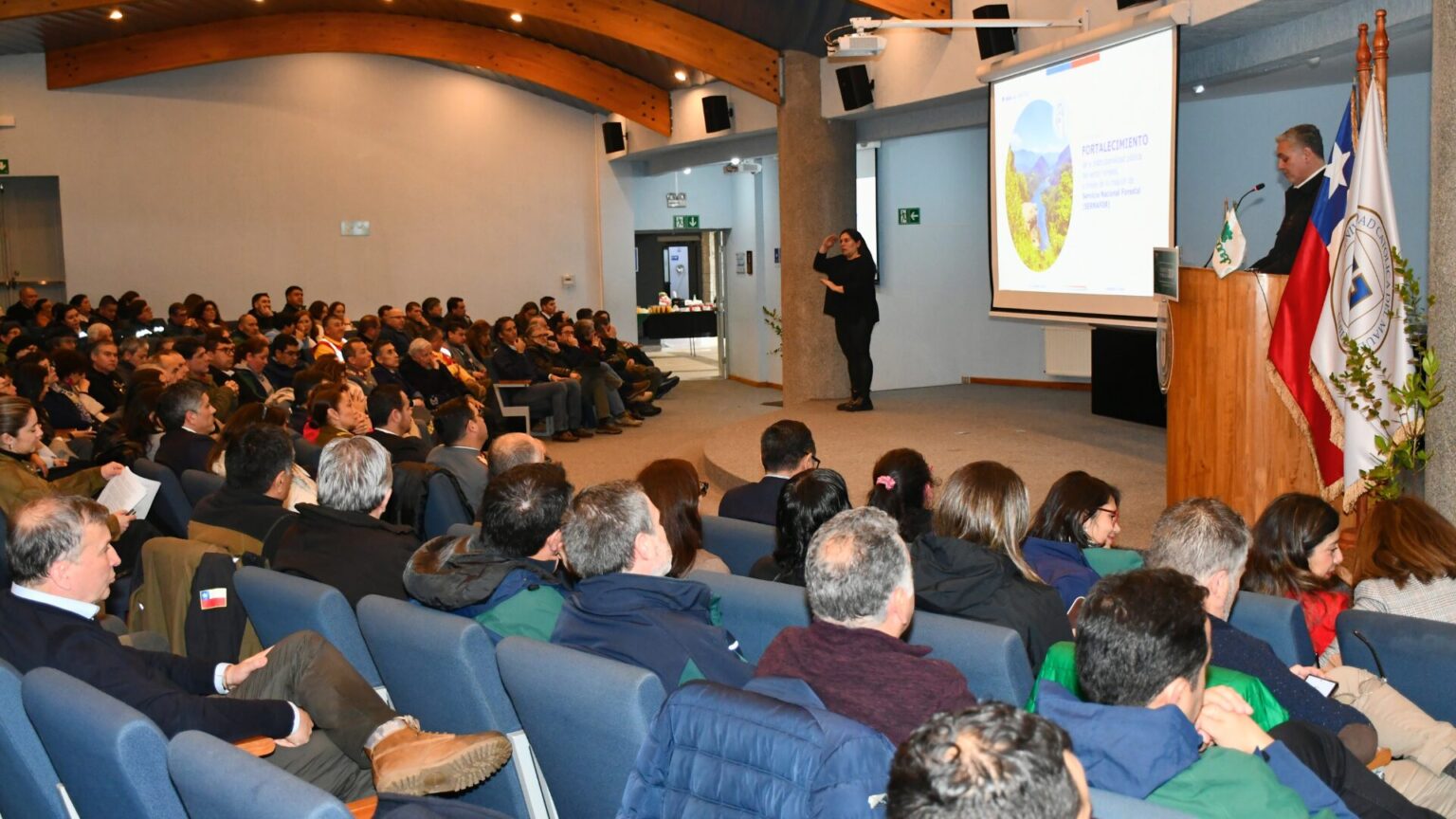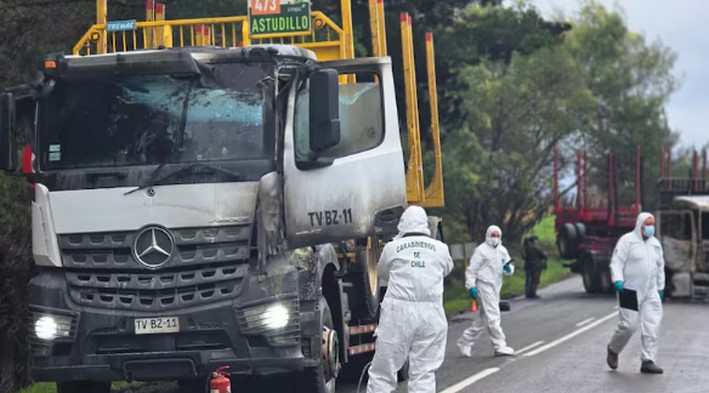Executive Director of CONAF: "Our Sector Begins a New Cycle"
The fulfillment of the Government's commitments for this period, especially the enactment of laws creating the National Forest Service, which transforms the National Forestry Corporation (CONAF) into a public service, and the Biodiversity and Protected Areas Service (SBAP), were among the highlights mentioned by CONAF's executive director, Rodrigo Illesca Rojas, during the institution's 2024 Participatory Public Accountability Report.
The ceremony, held in the main auditorium of the Catholic University of Maule in Talca, Maule Region, was led by the Minister of Agriculture, Esteban Valenzuela Van Treek; the Maule Regional Governor, Pedro Pablo Álvarez-Salamanca Ramírez; and the Regional Presidential Delegate, Humberto Aqueveque Díaz.
One of the key points emphasized by the Minister of Agriculture was that "as a Government, we fulfilled our commitment to pass the National Forest Service Law, which reinforces the outstanding work CONAF has carried out for years and presents it with new challenges. However, as I have stated, our work continues, and we call for further efforts on the bill regulating the prevention and mitigation of forest fires, to establish modern legislation that enhances prevention, especially in wildland-urban interface zones."
For the Maule Regional Presidential Delegate, Humberto Aqueveque, this public report showcases the "achievements of a vital institution for the forestry sector and its significant work in this region. We are familiar with their on-the-ground efforts, where their firefighters are among the most visible faces. Therefore, like the regional government, we support and seek ways to provide them with more resources and infrastructure for their work."
Milestones in CONAF's Work
In his presentation of the public report, CONAF's executive director, Rodrigo Illesca, emphasized that "our sector is entering a new cycle, with a public service endowed with all corresponding powers, after President Gabriel Boric's government gave decisive momentum to the Sernafor Law bill following eight years of legislative processing."
As a result, alongside the Ministry of Agriculture, work is underway on the implementing decrees that will operationalize this forestry public service.
Other actions highlighted in the report include:
A timely inspection model incorporating satellite detection technology to protect forest and xerophytic ecosystems, enabling the detection of structural changes and early identification of unauthorized interventions, while also focusing inspection activities on high-risk areas.
For wildfire protection, the Government allocated over 156 billion pesos for the 2024-2025 period, enabling the deployment of 316 firefighting brigades nationwide, with a 26% increase in women's participation, and an aerial fleet of 77 aircraft, marking a 7% increase compared to the previous season.
Regarding wildfire prevention, efforts were made with 118 educational institutions through the Prepared Schools Program, and nationally, 75 Prepared Communities have now been established to face these disasters.
In state-protected wilderness areas, besides the creation and expansion of new units such as the Tres Cruces Natural Monument and the Santiago Glaciers National Park, 2024 saw the launch of a public-access photo-monitoring platform. This platform provides relevant information for decision-making in conservation and management of protected areas under CONAF. This technology has helped detect previously unrecorded wildlife species, improving conservation plans in these areas.
For the recovery of burned forests after the wildfires affecting Chile during the 2023-2024 season, 3,921 hectares were treated to restore forest ecosystems, working with 969 landowners across the O’Higgins and La Araucanía regions.
Under the Emergency Employment Program, the institution provided 2,522 monthly job placements for workers during this period, distributed across 148 municipalities in 11 regions from Atacama to Los Lagos, with 79% of hires being women.
Among the challenges outlined by CONAF's executive director, Rodrigo Illesca, is the Environmental Education Program for Wildfire Prevention, aiming to conduct 320 teacher training sessions and engage with 160 schools under the Prepared Schools Program. Additionally, work will be carried out with 39 new communities nationwide, 67% of them located between the Valparaíso and La Araucanía regions, under the Prepared Communities Against Wildfires Program.
In native forest recovery and management, the goal is to manage 107,788 hectares of forested land through recovery, restoration, and management of forest and xerophytic ecosystems.
Lastly, under the Emissions Reduction Program, in collaboration with the World Bank and the Forest Carbon Partnership Facility (FCPF), various actions will be implemented with total funding of approximately 5 million dollars.















